12 Types of Tile: All the Different Varieties to Choose From
Author: Rick Worst | Editor: Omar Alonso
Review & Research: Jen Worst & Chris Miller

The types of tile out there are staggering these days, especially if you get sucked into looking at the sub-categories too. But we can make it real easy to understand.
While carpets and vinyl used to be deemed sufficient for floors , tiles have slowly resurfaced as the luxury option. They’re beautiful, durable, functional, easy to clean, and don’t require professional maintenance.
Owing to this and the variety of aesthetic designer tiles available, they're no longer reserved only for bathrooms and kitchens.
If you’ve never done tiling projects before, the sheer number of floor tile types can surprise you. In addition to the material, the size, and the style, tiles are also differentiated based on which part of the house they’re going to be used for.
12 Types of Tile
However, don’t let this overwhelm you—here’s a quick one-stop primer on the different types of tiles that you should know that’s sure to “floor” you. If you're pulling up old tile yourself, make sure to learn about the tile removal tools that can aid you so you aren't working harder than you need to.
Ceramic Tiles
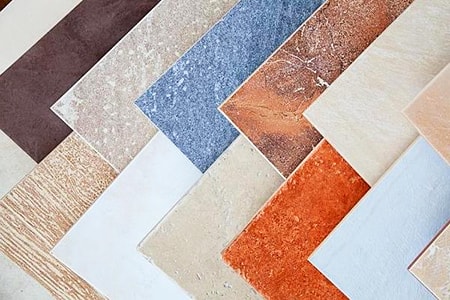
Ceramic tiles have become extremely popular for the delicate touch they add to the space as well as their versatility—they can complement almost any kind of interior decor.
Ceramic tiles are made of clay and their allure is further compounded by their long lifespan and resistance to abrasion and scratches. They're among the more popular types of tile flooring.
Due to their impressive durability, ceramic tiles are commonly used in areas where there is a lot of frequent foot traffic. The design possibilities are also numerous since these tiles come glazed in a range of colors and patterns.
However, these tiles don’t do well in extreme heat or cold and are given to water absorption, too. You may find them cracking over time, especially if you drop something heavy on them. There's also terracotta tiles made of clay, but these aren't sturdy enough for this kind of use.
Porcelain Tiles
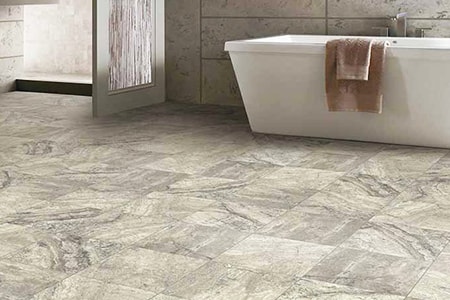
The differences between porcelain and ceramic tiles are minute but exist nonetheless. Due to this, many folks consider porcelain tiles a type of ceramic tile.
Porcelain tiles are made of denser clay than ceramic tile and are treated at temperatures much higher than their ceramic cousins. Naturally, this makes them more sturdy and resistant to damage, too.
This also means that porcelain tiles can be used in extreme temperatures due to their resistance to first and negligible porosity.
Porcelain tiles are available as both polished and unpolished, making them suited to a range of applications both domestic and commercial (with light foot traffic). Though glazed porcelain tiles are also available, these are less sturdy.
Quarry Tiles
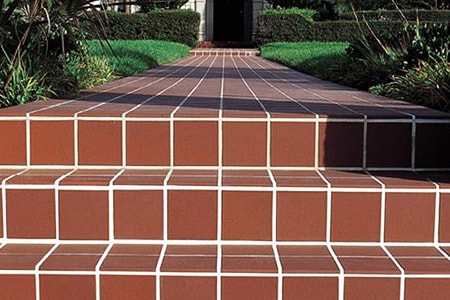
Contrary to what the name suggests, quarry tiles don't have their origin stories in the many quarries that dot the United States—instead, they’re manufactured from grinding together materials such as feldspar, clay, and shale and molding them into tiles.
These minerals put quarry tiles in the league of the harder flooring tiles. The low porosity also means that quarry tiles can be used both outdoors and indoors.
Mosaic Tiles
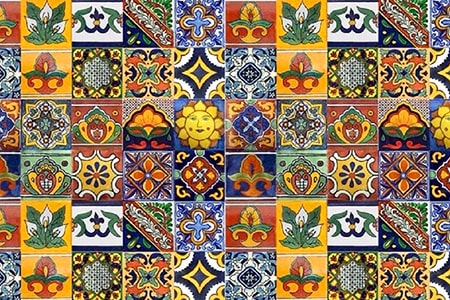
A hot favorite, mosaic tiles are proof that our forefathers, as far back as the 3rd millennium BC, were of aesthetic-loving disposition. Mosaic tiles are made of smaller tiles and tile pieces, generally glass, put together in decorative patterns to make one large tile, backed by a mesh.
Each small tile used is generally less than two inches in both width and length. This makes it easy to install in smaller rooms. For the right finish, though, it's of utmost importance that the right cutting tools be used.
Mosaic tiles commonly feature in bathrooms, kitchens, countertops, and floors, but can go anywhere in the house. They don’t chip easily, resisting both stains and moisture, making them great for both indoor and outdoor use. Don't clean these tiles with bleach in fear of damaging their special paint artwork.
They’re also easier to clean and the grout lines make them more textured and slip resistant than other tiles. If you like complex patterns and colors, these can be the most attractive kinds of tiles. I've even seen some types of light switches that are made of these tiles.
Marble Tiles
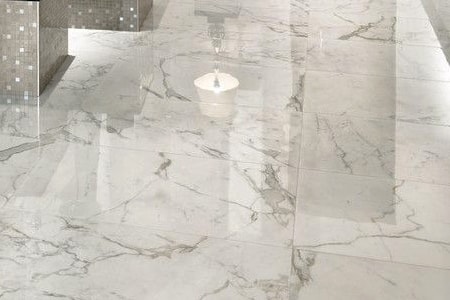
Marble is a timeless material that, through the ages, hasn’t lost its synonymity with “luxury”. This makes marble a great choice for those who want to add elegance and sophistication to their homes and tile types.
Marble tiles are one among the natural stone tiles and are available in a range of colors, owing to the variable component materials extracted. Marble tiles are also available in a range of finishes, from honed to brushed to tumbled to polished, making them ideal for any room. There are many types of marble to choose from.
Though they’re beautiful, marble tiles are expensive and prone to staining from spills, owing to their porous build. This makes them relatively rare, especially as tiles, outdoors.
However, the porosity can be combated, to some extent, with a good surface sealer that acts as an invisible layer of protection and clogs the pores.
Granite Tiles
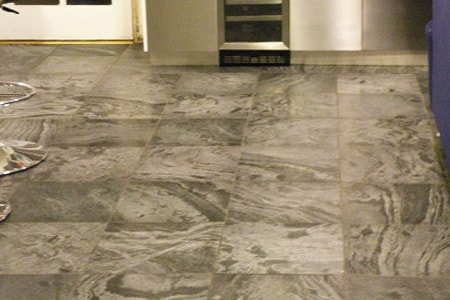
For areas with extremely heavy foot traffic, granite tiles are the best bet as they're more durable than even marble. Made from hard, dense igneous rock, granite tiles have a unique look owing to the natural veining and speckling of minerals in such rocks.
No two granite surfaces will ever look the same. The unique finish also sets them apart, physically, from other stones. Granite tiles are available in a range of colors and are as associated with luxury as marble.
These natural, durable types of tiling are hardy and extremely scratch resistant (especially once polished), as well as acid resistant. However, like marble, they’re also highly porous, which means that they’re easy to stain.
Travertine Tiles
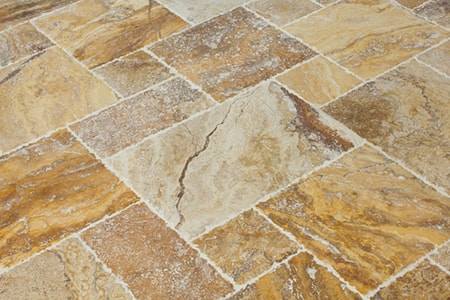
Manufactured from a type of limestone commonly found around hot springs and caves, travertine tiles, like other limestone products, come in a variety of colors and feature a pitted, rough surface.
However, the finish these tiles provide is extremely stylish and lends a natural look to the room. Travertine is also extremely durable—proof of this lies in the Roman buildings spread across Italy, as they were built using travertine.
Today, travertine is used to build pool decks, walkways, bathrooms, and other structures/places where exposure to water is high. Apart from being durable, travertine is also easy to repair.
It also earns some major brownie points, being 100% biodegradable and eco-friendly. While it’s cheaper than some other materials, travertine can still work out to be expensive.
Slate Tiles
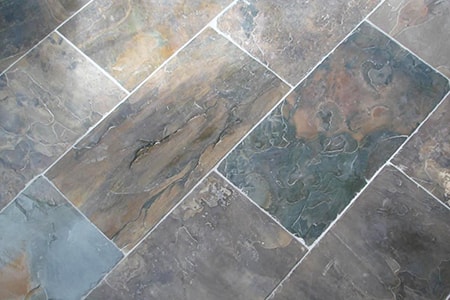
Another popular material when it comes to flooring tile types, slate tiles come from natural mineral deposits, making them extremely durable while remaining naturally gorgeous.
The material is also capable of keeping the room warm and with its naturally grainy texture, is highly slip resistant. Though slate tiles are cheaper than granite and marble, they’re still considerably more expensive than ceramic tiles.
Sandstone Tiles
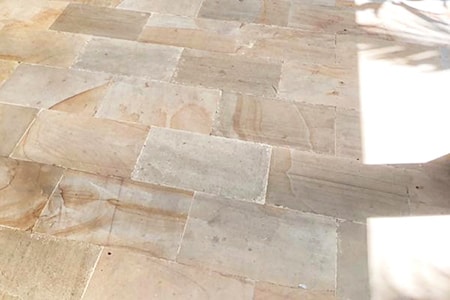
Sandstone lends a supremely gorgeous, natural vibe to your outdoor areas and is especially common in walkways, patios, and pool surroundings.
These types of tile are also available in a range of sizes, styles, and colors and provides a very earthy aesthetic to the space. Sandstone is as sedimentary rock consisting of quartz and sand.
Terrazzo Tiles
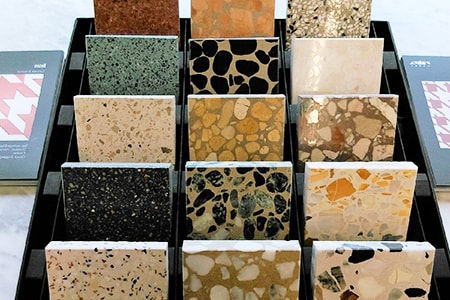
Terrazzo tiles are an amalgamation of different types of materials, such as glass, quartz, marble, and granite.
The process of preparation involves polishing, curing and grounding, resulting in a durable, smooth, attractive and shiny finish, placing these tiles in the ranks of those preferred in public buildings.
Despite their beauty, terrazzo tiles may not be the best option for home floors, owing to their slipperiness. You'll want to be looking into the types of rugs out there to help reduce this issue.
Onyx Tiles
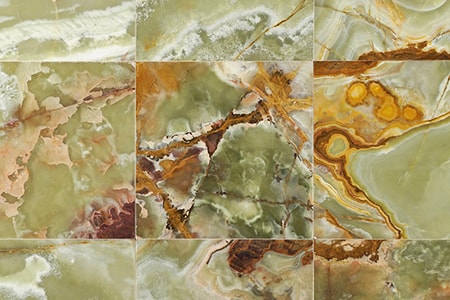
Made from onyx, a calciferous stone with a lovely translucence, onyx tiles look very similar to marble tiles. This unique appearance is a result of the stone’s rich mineral density, making it a great choice for living spaces.
However, these stones are super fragile; to further strengthen them, materials such as certain types of fiberglass, mesh, and resin are incorporated. The unique surface forms of these stones determine their use.
These stones are available in different colors and are preferred indoors for their light coloring. Preparing and installing onyx tiles requires professional specialization, which adds quite substantially to their cost.
Wooden Tiles
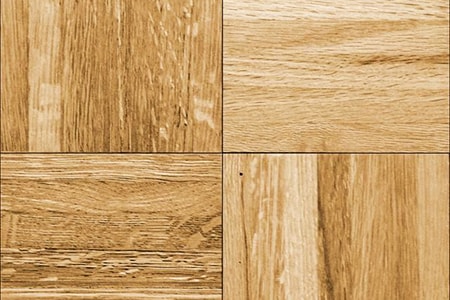
Wooden tiles, a very recent innovation, are quickly gaining in popularity. These tiles retain the ability of the base material to expand and contract depending on the surrounding humidity level and are available in two main types—hardwood and faux wood.
Hardwood floors don’t require frequent replacement, are low maintenance and easy to install. Additionally, these floors don’t show dirt or stains and are extremely durable.
Hardwood floors also greatly add to the value of the home in the real estate market, so if you’re looking for returns, this flooring is a great option.
Faux wood tiles, as the name suggests, are fake wooden tiles that combine the beauty of natural wood with the hardiness of conventional tiles. These tiles are more water resistant, durable, varied, termite-free and low maintenance than other types of tile and are made of a ceramic-based material.
Additionally, these tiles are resistant to scratches, making them a popular option in foot-traffic-heavy areas. However, unlike wood, these won’t absorb water.
Types of Tile for Every Taste
There are many different types of tile out there, each one adding its own kind of beauty to your home. However, at the end of the day, though each tile has its own place and time, what matters is your preference.
Now that you know the main types of tile, you can choose better and make your floor “the” floor of your dreams to enjoy for the coming decades.



